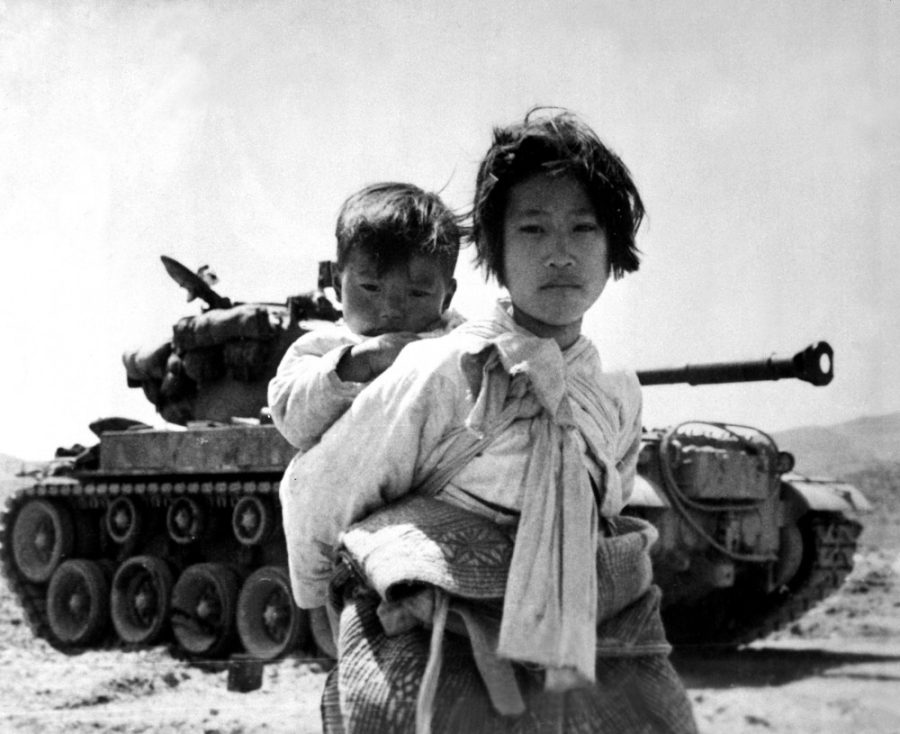Crisis looms over the Korean peninsula as talk of nuclear warfare and bald-faced threats of destruction are thrown from one side of the Pacific to the other, and Americans are beginning to wonder whether or not the world will see an atomic showdown. But, while the threat of violence is real, it’s not new or even unique in the long and strained history of North Korean-American relations.
The threat of a nuclear showdown with North Korea has been used to get attention and obtain better deals with its much more powerful diplomatic rivals.
Beginning with the violent Korean War, during which over two and a half million people lost their lives, both soldier and civilian, the United States has had a history of only negative and contentious relations with the isolated hermit kingdom. In the years following the ceasefire in 1953, the cold war between the United States and North Korea never lost this overtly hostile and bellicose tone.
In 1968, North Korea secured perhaps its greatest propaganda victory by capturing the USS Pueblo, a United States intelligence ship stationed off the infamously closed off country’s coast. Through use of force the ship was captured and the sailors imprisoned, until President Lyndon Johnson formally apologized to the Korean government in exchange for the release of the prisoners.

This apology, though immediately revoked once the prisoners were released, set the stage for the later developed atomic diplomacy that has left the two nations so increasingly on edge. By rolling over to a North Korean show of force, the Kim family realized the only way to get the attention of Washington is to make threats and act through violence.
In 1993, the first North Korean missile tests began, resulting in an international crisis that demanded the attention of newly inaugurated President Bill Clinton. The threat of North Korea developing missiles capable of reaching Japan made the previously local threat of the stagnant and authoritarian nation into a potential multinational war zone. When the deal was finalized to ensure no further attempts to build nuclear warheads, the United States promised, “to lift decades-old sanctions, supply the North with 500,000 tons of oil a year and provide $4 billion in aid to construct a light-water reactor capable of producing nuclear energy but not weapons.”
RELATED: Opinion: Beyond alternative facts
In effect, North Korea just held the world hostage with only the idea of nuclear capabilities, and it didn’t take long for them to take the next step and see what actual missiles could get them. In the years following 1993, five more missile tests would follow, each associated with growing concern from the world community as they began to treat the People’s Republic of Korea as much more of a threat than they were before.
In 1999, North Korea agreed to cease the production of non-nuclear long range missiles in exchange for a lessening of economic sanctions, this flying the face of their continued search for enriched uranium to develop nuclear warheads (3). By using either threats or the idea of their arsenal, the Korean government was able to lift harsh sanctions and have the United States help fund their energy program.
The hope of possessing these weapons is not the annihilation of the world in nuclear fire. Instead the goal is to use the threat of violence to convince the United States to abandon South Korea and continue a policy of appeasement. As put forward by B.R. Meyers, the Professor of International Studies at Dongseo University in Busan, South Korea, “North Korea needs the capability to strike the U.S. with nuclear weapons in order to pressure both adversaries into signing peace treaties.” By developing weapons of mass destruction, North Korea will be able to wag the dog by the tail and receive economic, military and diplomatic concessions that they otherwise would not be able to obtain.
RELATED: Opinion: Hail to the chief
North Korea is not developing weapons to invade the United States and go out in a blaze of glory, and they are much more rational than we give them credit for. The precedent of violence receiving attention has led them to the logical assumption that possessing the most violent weapon out there, even if only one, is enough to get them as much attention as they could ever want.
Follow Alec Scott on Twitter









